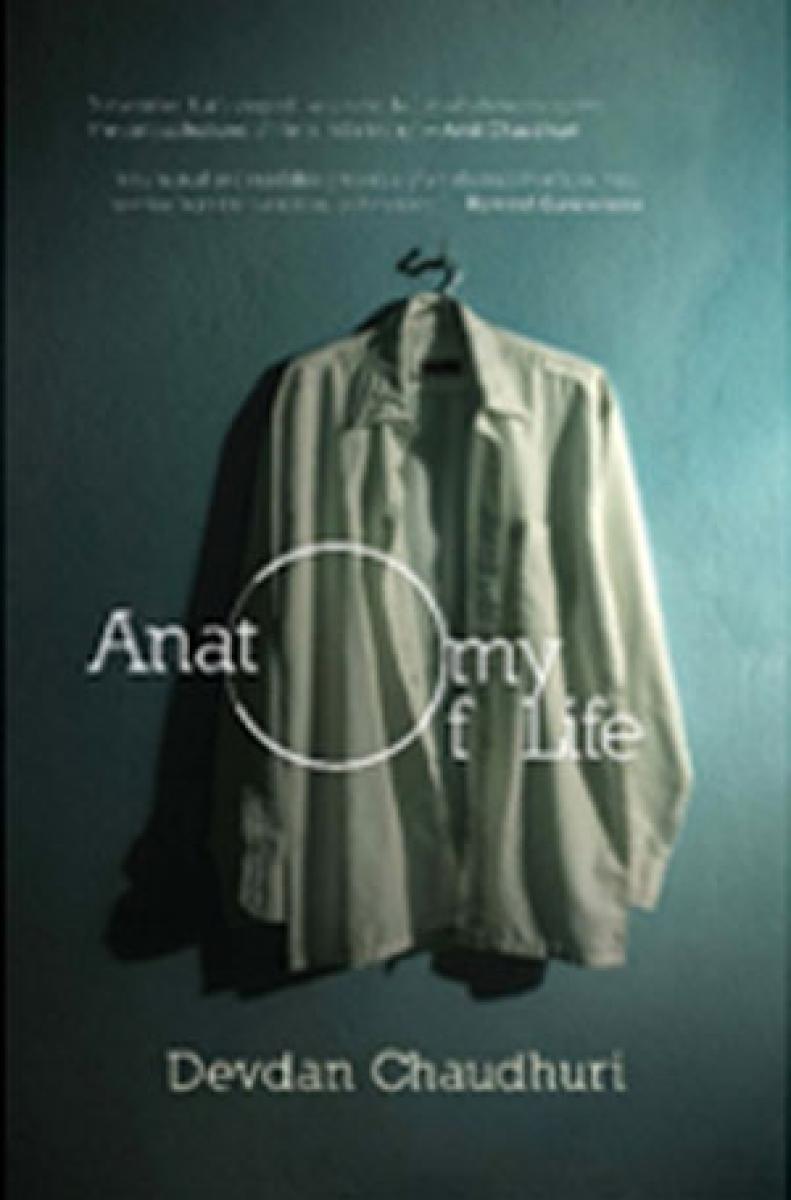Live
- RBI gears up to neutral stance, flags rate cut in near future
- Climate Inaction is Criminally Insane
- Bhatti prods officials to shore up state revenue
- AP Cabinet meeting begins, to address key issues
- RBI ups UPI Lite wallet threshold
- Epigraphists decipher 304-yr-old stone inscription in Khurda
- Assets worth crores unearthed from govt official
- TG is mfg hub for global OEMs, says Sridhar Babu
- Will resolve rice millers’ problems, assures govt
- Ratan Tata's passing away is a loss, not just for Tata Group, but to every Indian, says Mukesh Ambani
Just In

Devdan Chaudhuri is mature in his provocation of the politics of genre, without being a party to it. ‘Anatomy of Life’ proclaims his scepticism about theory and his delight in poking around in the dark to explore the practicalities of literary language.
 Devdan Chaudhuri’s fictional voice in his debut novel ‘Anatomy of Life’ is a rarity. He is not an abstract theorist or an analytical mechanic but a writer for whom criticism is a way of proselytising for life and narrowing the gap between art and life
Devdan Chaudhuri’s fictional voice in his debut novel ‘Anatomy of Life’ is a rarity. He is not an abstract theorist or an analytical mechanic but a writer for whom criticism is a way of proselytising for life and narrowing the gap between art and life
Devdan Chaudhuri is mature in his provocation of the politics of genre, without being a party to it. ‘Anatomy of Life’ proclaims his scepticism about theory and his delight in poking around in the dark to explore the practicalities of literary language.
The book is as much autobiographical as critical. Chaudhuri is not the ‘Poet’ – his fictional doppelganger in the novel – because the novel is a refracted autobiography. The person is almost always the third and the tense reported.
The 16-25 age is a rather rapturous, breathless, happening or disquietingly un-happening time in a man’s life. It can leave one making decade-long recoveries or becalmed without a tide in prospect.
The phrase – “everything is finished” – recurring in the novel prods the young protagonist to the fine balance that determines reality in the world that the quest for wisdom runs through mundane streets and often sojourns at houses of iniquity. There are no highroads to wisdom. The ‘Poet’ is both a face, the face of the times, and a faceless ghoul haunting the dark margins of experience.
The ‘Poet’ comes to know that beauty is beauty only because there is ugliness. Presence and absence give birth to one another, difficult and easy complete one another, long and short measure one another, high and low fill one another. The sage one dwells in the realm of nothing. In that world things arise without beginning, abide without waiting and come to fruition without dwelling. The sage too never dwells and thus never loses. At the end of the novel the Poet and the Artist brave the uncertainty of the penumbral streets.
‘Anatomy of Life’ follows in principle the structure of the ‘Jataka’ tales, beginning with the unnamed protagonist: the Poet. Chaudhuri’s fiction intrigues because its lineages are not to be found in other works of fiction but, in foundations of archetypal knowledge, that is about the immanence of the posited question, never about the answer.
The novel is organised in six chapters – Seasons; Myriad Void; Circles and Spheres; Centre and Periphery; Balance; and The Wheel.
Only the Buddha in the Jatakas is in a position to recollect all the details of his past story where he appears as a character like any other, whereas here Chaudhuri’s Poet finds parallels to his life in the stories he is told by sundry.
At the end of the tale the threads from the different aspects of the story are tied together. The Buddha, still described in the third person, gives a short connecting speech. These revelations, in both the Jatakas and Chaudhuri’s novel provide us, along with the structure, an underlying pattern of unity across a diverse group of stories, of many different genres and narrative methods. In achieving this Chaudhuri wrestles new turf and nudges the novel back towards story-telling.
Like the Convalescent in Friedrich Nietzsche’s ‘Thus Spoke Zarathustra: A Book for All and None’, Devdan Chaudhuri’s ‘Poet’ is always, already on the mend. Bolder than what the Japanese author-illustrator Nakamura Hikaru has done in a very popular manga, or illustrated serial novel, ‘Seinto Oniisan’ (Saint Young Men), Chaudhuri does not merely thrust a lost Siddhartha into suburbia and watch the hilarious incongruities play themselves out. The ultimate message is: A life which can’t be embraced, can’t be ignored, can’t be enhanced, can’t be harmed, can’t be treasured, and certainly can’t be despised.

© 2024 Hyderabad Media House Limited/The Hans India. All rights reserved. Powered by hocalwire.com







